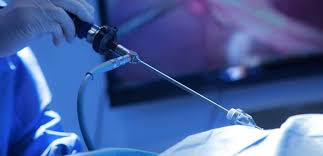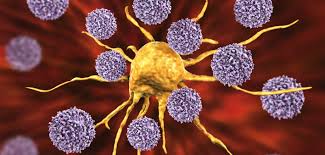After the advent of Laparoscope (Rod Lens system to peep inside abdominal cavity) in 1980s, there was a rapid increase in number of surgical procedures done in 90s by this method. In fact as predicted, within two decades almost all benign and cancer surgeries of abdomen and chest were shown to be feasible. This was largely due to development of state of art Camera System, dissecting instruments and blood vessels sealing devises .
Right from the beginning there was no opposition for laparoscopic surgery for benign diseases, but there was lot of concern and misinformation for use of laparoscope in Cancer surgery. The main concern was due to presumed apprehension of handling of cancer affected organ, presumed inadequacy of radical removal of Cancerous portion along with draining Lymph Nodes (required for staging and cure). Also there was concern regarding the dissemination of cancer cells in abdomen and recurrence at the port site (site from where the instruments are inserted).
The benefit of laparoscopy in cancer surgery are many fold. This tool can be used not only for treatment but also as an investigative and staging modality at different steps in cancer treatment. Some times there is confusing picture in investigations, the diagnostic laparoscopy can come as handy investigation because surgeon can peep into the abdomen and take a diagnostic biopsy without a long cut in the abdomen. Moreover this modality can be used as a staging procedure before starting the curative resection of tumor. There is no full proof investigation which has accuracy rate more than 80-90 % in providing all the information before surgery. Many times on exploration of Abdomen, the cancer is found in much advanced stage than predicted by preoperative investigations and the surgery is abandoned with patient getting a large incision (Cut) without any treatment. It has been shown by a high class statistical analysis that we can alter the surgery in up to 10-20% of patients if we put laparoscope in abdomen before proceeding the curative resection even if we have planned conventional open surgery. In our department of GI Surgery in Action Balaji Hospital there is a protocol to put laparoscope in all abdominal cancer surgery before proceeding for resection.
There has been a very high grade statistical evidence (randomized controlled trials, systematic reviews, and high class meta analysis) available over the period of last two decades which proves that the laparoscopic surgery for cancer is very safe, feasible and highly effective.
In immediate and early postoperative period after Laparoscopic Surgery, the patient requires less pain killers , starts sitting, walking and eating much earlier than in open surgery. The chest complications, ICU stay and blood requirement is also much less. There is also ample evidence by high class studies that there is no compromise in cancer principles (in resection margins and lymph node yield) and there is no increase in local or port site recurrence. In many regions laparoscopic cancer surgery has become the Gold Standard.



